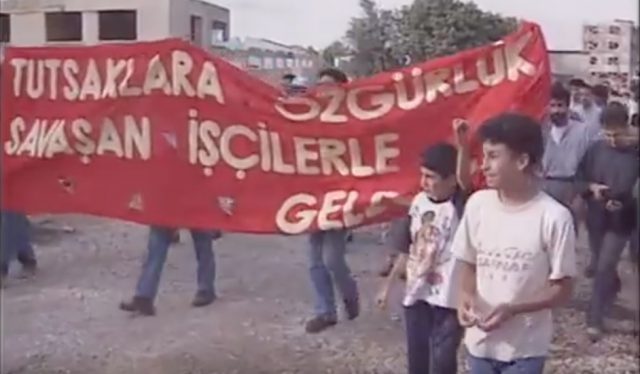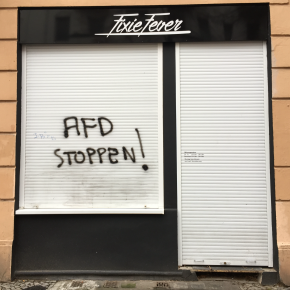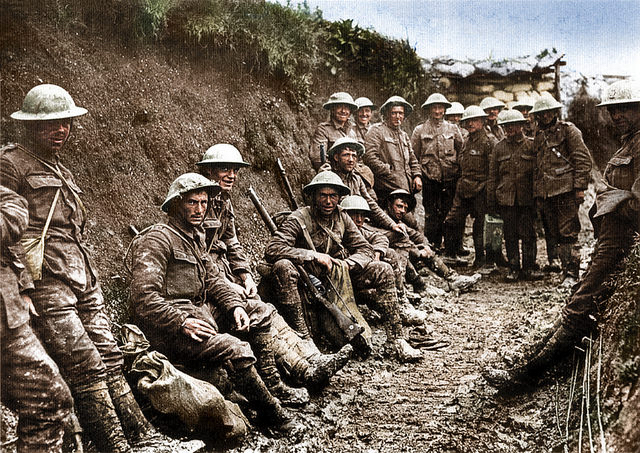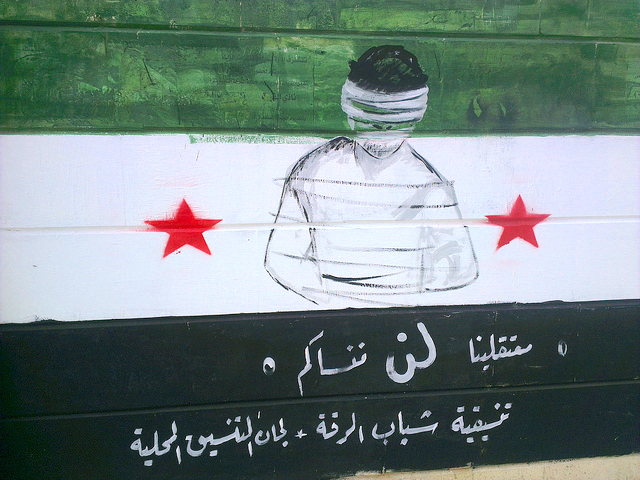Lale Colak died upon release from Kartal Prison, Istanbul, on December 20, 2000. She couldn’t speak, her mouth was ulcerated, and her hair had turned white after 222 days without solid food. Lale’s mother says that she didn’t want to die, but was militantly devoted to a wave of prisoner hunger strikes that took aim at the expansion of Turkish mass incarceration.“You don’t know the terrible situation in prisons, mother,” she said earlier into her fast, “we do this to make life better for all humanity.” According to her sister Dilek, Lale’s final movement was a slow, gentle smile.
In October 2000, as part of a growing trend in prisoner resistance, eleven groups ranging from Marxist revolutionaries to Kurdish liberation factions coordinated hunger strikes in opposition to the construction of F-type prisons in Turkey. F-types would replace unmanageable and increasingly organised communal dormitories (which then Minister of Justice Hikmet Sami Türk described as being controlled by terrorist groups) with American designs that feature CCTV cameras and one to three inmates kept in individual cells, as initially stipulated by the 1991 Anti-Terror Law.
Although the strike initially focused on political prisoners, it expanded rapidly, and eventually included participants from outside prison as well. The Turkish government was so threatened by this approach, which mined the political significance of death not unlike suicide bombings, that it responded quite brutally, before letting the strike gradually lose momentum of its own accord.
According to Amnesty International, from October onwards, over a thousand prisoners in dozens of prisons joined the hunger strike. The first “death fast” began on November 20 of that same year, during which the striker was allowed to have tea, water, sugar, salt, and vitamin B1, until they succumbed to starvation.
Hundreds of “death fasters” would ultimately participate in the strike, which by October 2001, had spread beyond the prison system, with strikers emaciating themselves in four “houses of resistance” in the Istanbul shantytown of Küçük Armutlu. In April 2001, the first striker died, and over a hundred death fasters had died by mid-2013. Broadly, the strikers’ starvations-as-protests were interpreted as acts of martyrdom that took aim at disciplinary violence in the abstract.
During the week of December 19th to 26th, 2000, in response to months of hunger strikes, ten thousand soldiers waged Operation Return to Life and violently occupied forty-eight prisons. The Turkish military stated that this was to “protect” the strikers, who were being forcibly starved by the leaders of illegal radical leftist organisations. The Human Rights Foundation of Turkey suspected that the military’s offensive was especially severe, and included the firebombing of prisons, which the military conveniently blamed on the prisoners burning themselves alive.
These reports were in line with an established pattern of state brutality in the Turkish prison system. Amnesty International found that by October 2000, there was a general climate of unaccountable violence towards inmates. In September 1999, ten prisoners died and dozens were injured following violent clashes with guards and soldiers in Ankara Central Closed Prison.
On July 5th, 2000, political prisoners barricaded themselves in the dormitories of Bardur Prison, provoking an armed response with smoke bombs, tear gas, bulldozers, truncheons, roof tiles and stones, with prisoners being dragged out with long-handed hooks, and severe cases of sexual violence and torture. Ultimately, Operation Return to Life backfired, and triggered an expansion of the hunger strike.
By June 2002, nearly every group had ended its participation in the strike, although individual fasts continued over the next four years. The strikes failed in their immediate objective of stopping Turkish prison expansion, though it was a difficult objective in the first place. Turkey pushed through the F-types because it needed to rehabilitate its Midnight Express reputation ahead of a possible bid to join the European Union, and deal with an unavoidable bottleneck in its prison system.
Since Kenan Evren’s dictatorship in the 1980s, Turkey has been committed to neoconservative standards of social deviancy which have produced a massive criminal population. Evren cracked down on civil liberties, banned unions and political parties, led vicious anti-leftist purges (particularly in universities), and imprisoned more than half a million people. His government empowered the military and instituted harsher punishments for an expanded list of crimes, making the Turkish prison system a more rabid entity.
Evren also introduced neoliberalism, which brought greater economic precariousness and a correlative rise in criminal behaviour, and heavily promoted Islamist religious moralism as an alternative to communism. Facing worsening problems of overcrowding, disease, political unrest, and collapsing infrastructure, Turkey had the option of either modernising its prisons, or scaling back its criminal justice system. While protesters aimed for the latter, the Turkish state was always biased towards the former option.
Obviously, strikers didn’t achieve their immediate objectives. There are currently thirteen F-type prisons in Turkey, holding prisoners that are charged with drug offences, organised crimes, aggravated life imprisonment, and armed militancy. F-type prisons, with their unique combination of severe isolation and mass surveillance, represented the wider zulüm (“oppression”) of an unjust society.
Death fasters in particular were concerned with responding by using their bodies to push back against a range coercive practices (both legal and extrajudicial) designed to correct deviancy. For many of the strikers, such political expression was always the point. The hunger strike was meant to give its participants the opportunity to regain control over their lives, while resisting efforts to forcibly confine those who stray from model citizenship.
The sheer excessiveness of the military’s crackdown during Operation Return to Life is an indication of how much this form of resistance shook Turkey’s political establishment. Similar to the politics of grief and martyrdom in revolutionary Iran, and the Kurdish prisoner death fasts in 1996, the F-type strike has managed to lethally portray the extent of ongoing zulüm. Its themes are particularly relevant given Turkey’s current descent into dictatorship over the last year. Under the circumstances, it is not unlikely that intense violence as a protest tactic (including death fasting) will return to the forefront of Turkish politics. Suicide bombing is certainly back.
Screenshot courtesy of Associated Press Archives. Published under a Creative Commons license.





